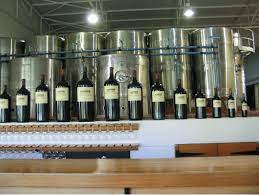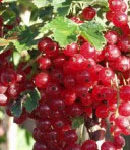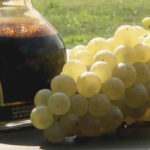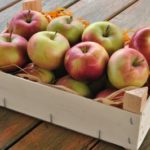Kupażowanie

Godną polecenia metodą redukcji kwasowości jest niewątpliwie kupażowanie soków o różnej zawartości kwasów. Są przecież jabłka kwaśne i mniej kwaśne; jeśli sok z nich zmiesza się razem, powstaje wyśmienity, napój, podczas gdy każdy sok z osobna nie jest zbyt smaczny.
Ten, kto nie musi kupować określonych odmian jabłek na sok, bo posiada ogród pełen rozmaitych owoców od mało kwaśnych aż po bardzo kwaśne, nie potrzebuje, rzecz jasna, myśleć o kupażowaniu, wystarczy, że zmiesza owoce przed tłoczeniem soku.
Inaczej jest jednak, jeśli poszczególne owoce dojrzewają w różnym czasie. Wtedy kupażowanie jest konieczne i miesza się już najczęściej wina. Owoce o małej zawartości kwasu nastawia się bowiem już we wrześniu, natomiast późne, kwaśne odmiany dopiero w listopadzie. Jednak niezależnie od tego, czy kupażowaniu ma być poddany sok, czy wino, pomiaru kwasowości w obu przypadkach dokonuje się tak samo, jak opisano wcześniej. Na przykład jeden z soków zawiera 4 g/l kwasu (może to być jakiś gatunek gruszki). Kupażuje się go więc z innym sokiem, którego kwasowość wynosi przykładowo 9 g/l.
Jeśli oba soki zmieszamy w proporcjach 1:1, to nowy sok po zmieszaniu zawiera 13 g kwasu w dwóch litrach, co daje kwasowość 6,5 g/l; jest to wartość do zaakceptowania.
Przy kupażowaniu bardzo miarodajny jest także ciężar moszczu. Wylicza się go w podobny sposób. Jeśli jeden sok zawiera 50° Ochslego, a drugi tylko 45° Ochslego, to w sumie daje to 95 : 2 = 47,5° Ochslego. Ponieważ wartość ta nie jest wystarczająca dla młodego wina stołowego, trzeba ją skorygować „na sucho”.





